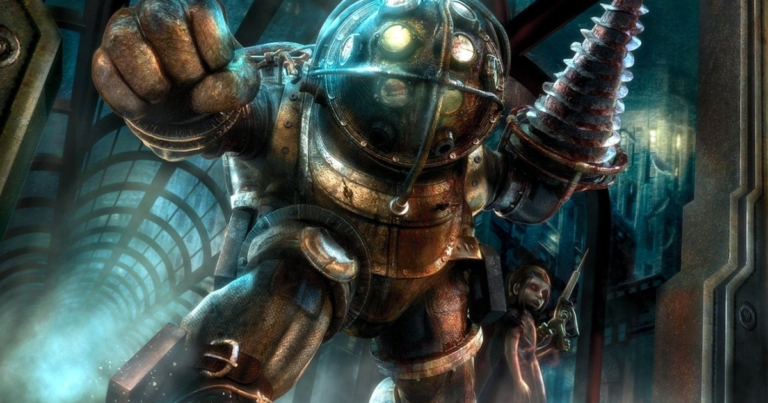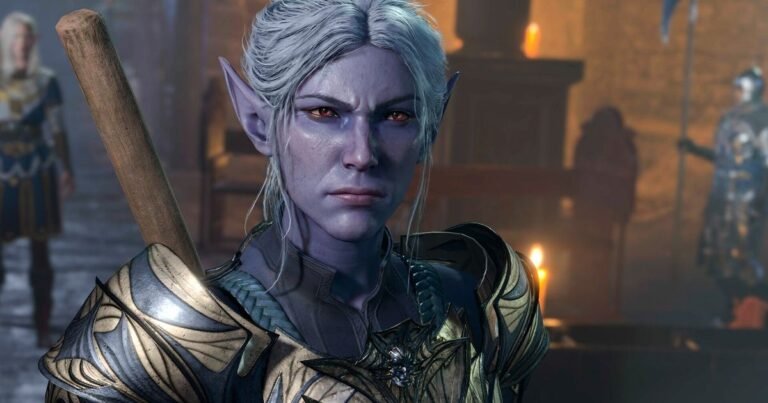
Released just before the launch of the PlayStation 5 Pro hardware, Call of Duty: Black Ops 6 brings a set of unique enhancements compared to the PS5 Pro – where we have an equally unique view thanks to a recent trip to meet the series’ Lead Rendering Engineer, Michal Drobot, and the talented team at Infinity Ward Poland. Black Ops 6 is produced by various studios – mainly Treyarch and Raven Software – but at the IW office in Poland, I was able to take a behind-the-scenes look at the tools used to make the game. So, this article has two objectives: discussing the Pro version updates with input from the developers – and talking about some of the broader improvements made to the engine.
The PlayStation 5 Pro update has been available for a good month now, and it’s clear that the Black Ops 6 enhancements are deeper than most. Some tweaks are subtle, while others make a more noticeable difference in frame rate performance. In summary, PS5 Pro users get enhanced visual settings when running at 60Hz, in addition to adopting PSSR to improve image quality with 4K as the target output. An anti-lag VRR feature has also been added only on the PS5 Pro – allowing us to run at over 60 fps while using that default graphics mode. Furthermore, there is a significant performance boost with the 120Hz mode enabled, where the PS5 Pro reverts to the base visual settings of the PS5 to provide a higher frame rate.
Starting with the 60 Hz mode, there are four improved visual settings, starting with a 2-4x increase in shadow resolution, depending on the type of shadow and its distance. This mainly affects ambient shadow maps, where quality is increased in both nearby and distant shadows that pass through walls. The improvement is a subtle but often welcome reduction of the staircase effect on hard shadow lines. Next, and more notably, we have improved global illumination. Specifically, a screen-space GI method has been added only for the PS5 Pro, simulating light bounce between surfaces. Again, it’s subtle in some areas – and requires switching between the base PS5 and Pro in full screen to be truly appreciated – but the reward is much more precise light interaction between a character and a nearby well-lit surface.
This SSGI setting is something the team is especially proud of, as it is a rasterized technique that attempts to mimic the quality of path tracing. It is calibrated to create a result comparable to the team’s internal reference, albeit obviously at a fraction of the cost. This also extends to how ambient shadow is implemented. With improved SSAO on the Pro, a richer layer of shadows is added to the scene – and to most indoor environments, like the headquarters – creating a more realistic final frame.
Screen-space reflections – SSR – have also been improved on the PS5 Pro, where the ambition is once again to match the team’s internal reference as closely as possible. When comparing it to the PS5 Pro, the main difference lies in the accuracy of how reflections are occluded by objects in the scene. When switching to the Skyline map, the PS5 Pro significantly reduces the “light bleed” around geometry – walls, tables – thanks to the updated SSGI, which also has a domino effect on reflection accuracy. All combined, we get a change that may not scream in the heat of Black Ops 6’s fast action, but sensibly uses Sony’s mid-generation machine to refine the game’s visuals.
When it comes to Pro hardware frame rate tests, the results are impressive. Black Ops 6 was already achieving 60 fps in campaign mode on PS5 Pro, and even with the visual enhancements of SSGI, SSR, AO, and shadows on PS5 Pro, along with the increased PSSR of PS5 Pro, we are able to maintain a consistent 60 fps. The good news is that, based on my tests, no mission drops below that mark. However, there is a way to test the base PS5 – by triggering a repeatable drop – through its split-screen mode. By using the multiplayer map Derelict and focusing the second player’s viewpoint on the action, the base PS5 encounters constant drops to around 50 fps. On the other hand, when switching to the PS5 Pro in the same scenario – while keeping the second player’s view fixed – we are nearly hitting 60 fps, with some occasional frame drops. Essentially, we see visual enhancements and better performance on the Pro, especially when the GPU is under stress.
One of the technical advancements for PS5 Pro is the inclusion of “anti-lag” VRR technology in this 60 fps mode. This feature functions when a 120 Hz VRR display is connected, with the 120 Hz mode disabled in the game menu. Developed in collaboration with Sony, an additional API call on PS5 Pro predicts the upcoming frame time. Instead of using VRR to mask 60 fps drops, as seen in many games, the VRR in Black Ops 6 is utilized to render frames quicker and surpass 60 fps when feasible. Through logical prediction based on previous frames, the engine can identify unused frame time within the 16.7 ms budget, generating frames sooner to reduce latency from controller input to displayed frame.
This results in a higher frame rate than usual. In most scenarios on a VRR screen, frames are produced between 60 and 120 fps, with performance fluctuating between 80 and 90 fps during the opening mission. There are occasional drops below 60 fps, particularly when detonating C4 in open-world missions. The VRR mode effectively reduces latency and is reported to be more responsive than running the game unlocked with the actual 120 Hz output mode active.
On the flip side, the 120 Hz mode on PS5 Pro eliminates new features such as visual upgrades, PSSR, and anti-lag VRR technology. Internally, the Pro hardware operates at 1440p with TAA, using the same quality settings as the 60Hz mode of PS5 Pro. A direct comparison between base and Pro consoles shows a performance boost of up to 35%, with instances of drops to 95 fps now mostly running at 120 fps. Although not flawless on PS5 Pro, drops to 100 fps are still possible, though less frequent.
The absence of PSSR in this mode is partly due to the frame time cost, which occupies 2.1 ms of frame time and is too significant within the required 8.3 ms frame time for 120 fps. Potential improvements in PSSR may address this issue in the future, but for now, TAA is better suited for 120 Hz. Additionally, utilizing PSSR to enable an 8K resolution mode in Black Ops 6 presents a similar challenge, as an 8K frame requires four times the pixels of a 4K frame, resulting in a four-fold increase in frame time cost for PSSR reconstruction.
Source: [gamesdetails.com](https://gamesdetails.com/wp-content/uploads/2025/10/ssbn.jpg)
Source: [gamesdetails.com](https://gamesdetails.com/wp-content/uploads/2025/10/vrr-run-4.jpg)
New Features in Black Ops 6 Engine
Aside from the PS5 Pro, Black Ops 6 introduces a range of new engine features. The “white room” test suite allows us to observe each aspect of the engine in isolation, from material lighting to volumetric fog, particle effects, and terrain transmission. This serves as a platform for the production team to focus on new technologies for Black Ops 6 and future projects before their official implementation.
New Additions to the Game
Among the new additions to the game are Weather Grade Volumes (WGVs), which leave persistent marks on the player’s body based on contact with mud, water, oil, or snow. The treatment of terrain, including the virtual texture system and super terrain, provides detailed texture maps that adapt based on player proximity and view. These additions enhance the realism and immersion of the gameplay experience in Black Ops 6.
Technical Analysis of Call of Duty Graphics
Next, the grass. For Call of Duty, presenting grass on various consoles is carefully balanced – to ensure visibility remains the same for online play across generations. Density and contact distance are combined to avoid a competitive advantage for any player – and, as you can see, instead of grass blades appearing abruptly, they are simply lowered under the ground to facilitate the transition.
Deformable Terrain and New Features
Finally, there is deformable terrain. Recent Call of Duty campaign modes include clutter, or deformable grass, that leaves a trail as you crawl. It is perhaps best shown in images of the white room, in a unique “vertex deformation” area that allows the player to paint their path through a small garden. Similarly, we have deformable snow for levels that require it – achieved through tessellation.
The number of additions made to the series, especially to Black Ops 6, are too numerous to address here. There are improvements in the game’s fog effect – with fog gathering in screen-space being used more extensively in each map, after being introduced in Modern Warfare 3. There are also improvements in the simulation of caustic water – at selected moments – adding reflections and refractions of the illuminated water surface. All of these points are a huge labor of love for the team and, given the fast-paced nature of the series’ action, they don’t always receive the credit they deserve – the main takeaway is that all Call of Duty titles push the technical boundaries in numerous ways.
Black Ops 6 continues this evolution, in some aspects building on the technologies and ideas of Vanguard, Warzone, and Modern Warfare 3, while also pioneering new technologies. However, with the release of the PS5 Pro in particular, the team took the opportunity to add some new features: the VRR anti-lag mode, the adoption of PSSR, improved global illumination, and reflections. It is the culmination of years of work, where the PS5 Pro is powerful enough to finally facilitate every feature in the console space.



